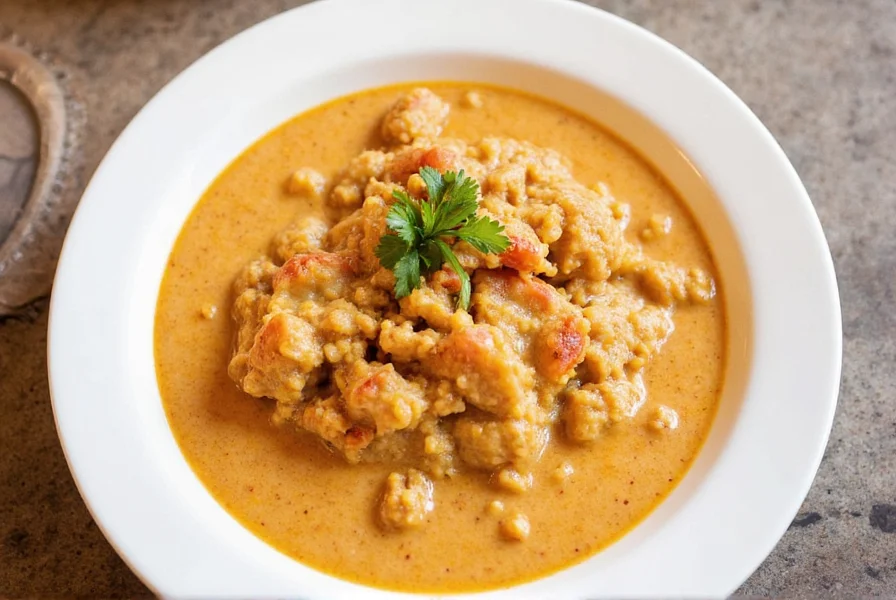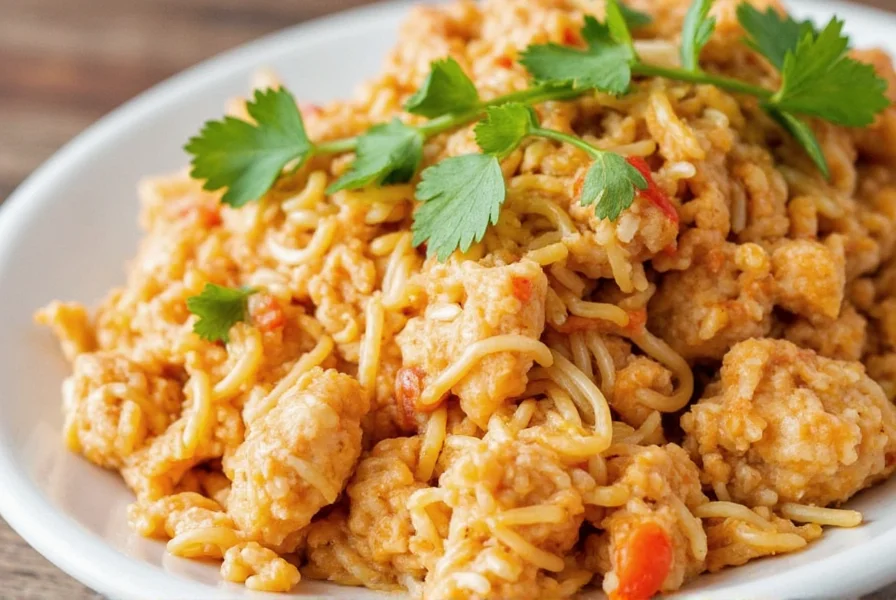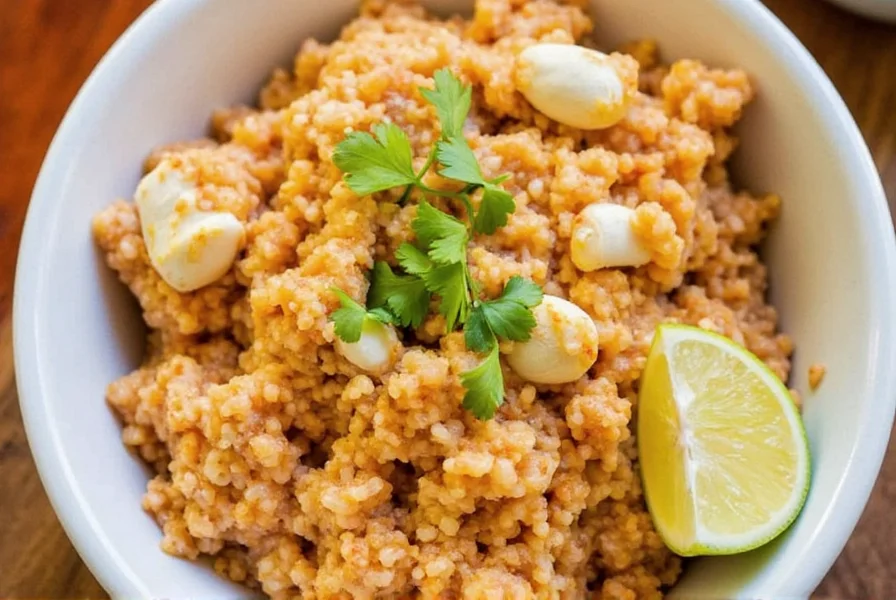Crab Etouffee Recipe: Step-by-Step Guide with Spice Tips & Storage Hacks
Crab etouffee is a classic Creole dish that's rich, flavorful, and perfect for any occasion. This step-by-step guide will walk you through the process of making a delicious crab etouffee from scratch, with tips on spice blending, storage, and more.
Ingredients
- 1 lb fresh lump crab meat
- 1/4 cup unsalted butter
- 1/4 cup all-purpose flour
- 1 cup chopped onion
- 1/2 cup chopped bell pepper
- 1/2 cup chopped celery
- 2 cloves garlic, minced
- 2 cups seafood stock
- 1 tbsp Worcestershire sauce
- 1 tsp smoked paprika
- 1 tsp garlic powder
- 1/2 tsp dried thyme
- 1/2 tsp ground mustard
- 1/4 tsp cayenne pepper (adjust to taste)
- Salt and black pepper to taste
- 2 tbsp fresh parsley, chopped
- Cooked white rice for serving
Step-by-Step Instructions
- Prepare the roux: Melt butter in a large skillet over medium heat. Gradually whisk in flour and cook, stirring constantly, for 5-7 minutes until golden brown. Pro tip: Toasting the roux properly develops deep flavor without burning.
- Toast spices: Add onion, bell pepper, and celery to the roux. Cook for 5 minutes until softened. Add garlic, smoked paprika, garlic powder, thyme, mustard, and cayenne. Stir for 1 minute to release aromas. Layering heat with multiple spices creates complexity without overpowering the crab.
- Build the sauce: Slowly pour in seafood stock while stirring. Add Worcestershire sauce, salt, and black pepper. Simmer for 10 minutes until thickened to a gravy-like consistency.
- Add crab: Gently fold in crab meat and cook for 5-7 minutes until heated through. Never overcook crab—remove from heat when opaque and tender.
- Finish and serve: Stir in fresh parsley. Serve over steamed rice with extra parsley garnish.
| Spice | Heat Level | Flavor Note |
|---|---|---|
| Black Pepper | Mild | Earthy, woody |
| Cayenne Pepper | Hot | Sharp, bright burn |
| Hot Paprika | Moderate | Smoky, sweet chili |
Pro Storage Tips to Extend Shelf Life
Store leftovers properly to maintain freshness:
| Storage Method | Shelf Life | Best For |
|---|---|---|
| Refrigerator | 3–4 days | Leftovers within a few days |
| Freezer | 2–3 months | Meal prep or long-term storage |
- Cool quickly: Spread etouffee in shallow containers before refrigerating.
- Use airtight containers: Glass jars or BPA-free plastic with tight lids prevent moisture and odor absorption.
- Reheat gently: Warm on stovetop with broth—avoid microwaving to prevent drying out seafood.
Spice Buying Guide: What to Stock and Why
1. Cayenne Pepper
Why it matters: Adds fiery heat without overpowering other flavors.
- Best brand: Simply Organic Cayenne Powder
- Use case: Essential for authentic Louisiana-style etouffee

2. Smoked Paprika
Why it matters: Offers depth, color, and a smoky backbone to your dish.
- Best brand: La Dalia Pimentón de la Vera
- Use case: Perfect for adding smoky notes without overpowering heat
3. Garlic Powder
Why it matters: Balances sweetness and heat while adding savory punch.
- Best brand: Badia Garlic Powder
- Use case: Ideal for layering with other spices

Frequently Asked Questions About Crab Etouffee
What's the difference between crab etouffee and crab stew?
Etouffee (which means "smothered" in French) features a rich, thick roux-based sauce that coats the seafood, while stews typically have a brothier consistency. Etouffee is a signature Creole dish with specific spice profiles that distinguish it from generic crab stews.
Can I use imitation crab instead of real crab?
While real lump crab meat delivers the best flavor and texture, you can use imitation crab in a pinch. Keep in mind that imitation crab has a milder flavor and will absorb the spices differently, so you may need to adjust your seasoning. Add it later in the cooking process since it requires less cooking time than real crab.
How do I prevent my roux from burning?
The key to a perfect roux is patience and constant stirring. Cook over medium-low heat, never leaving it unattended. If you notice it browning too quickly, immediately remove from heat and continue stirring. A wooden spoon works best as it doesn't conduct heat like metal utensils. Remember the rule: the darker the roux, the less thickening power it has, so adjust your flour-to-fat ratio accordingly.
My etouffee turned out too spicy, how can I fix it?
If your etouffee is too spicy, try these fixes: 1) Add a splash of heavy cream or coconut milk to mellow the heat 2) Stir in some tomato paste for balancing acidity 3) Mix in additional cooked rice to dilute the spiciness 4) Add a pinch of sugar to counteract the heat 5) Serve with cooling sides like cucumber salad or avocado. For future batches, remember to add spices gradually and taste as you go.
How do I know when my crab etouffee is properly cooked?
Your crab etouffee is done when: 1) The sauce has thickened to a gravy-like consistency that coats the back of a spoon 2) The crab meat is opaque and flakes easily 3) The flavors have melded together (taste and adjust seasoning) 4) The dish has simmered for at least 15-20 minutes after adding the crab to allow flavors to develop. Avoid overcooking the crab itself, as it can become tough and rubbery.
Final Thoughts: Keep Your Etouffee Sizzling
Mastering crab etouffee means mastering both flavor and preservation. The right spices bring complexity and kick, while smart storage ensures none of your hard work goes to waste.

Whether you're cooking for yourself, a crowd, or future cravings, these spice hacks and storage strategies will take your dish to the next level—every single time.











 浙公网安备
33010002000092号
浙公网安备
33010002000092号 浙B2-20120091-4
浙B2-20120091-4